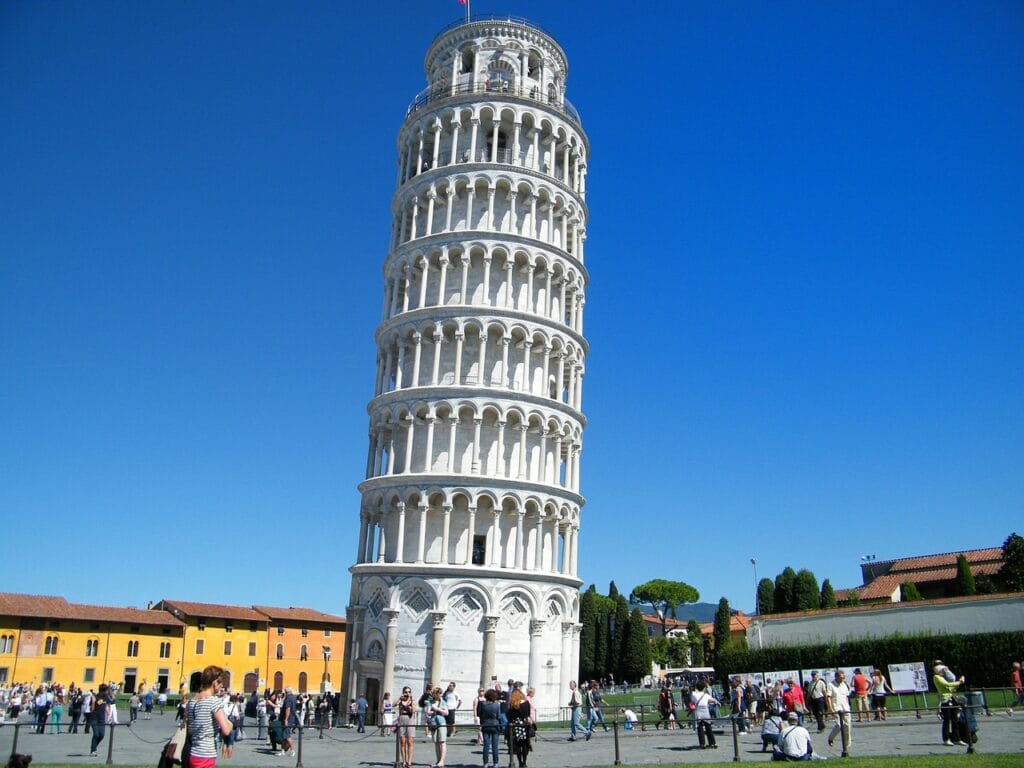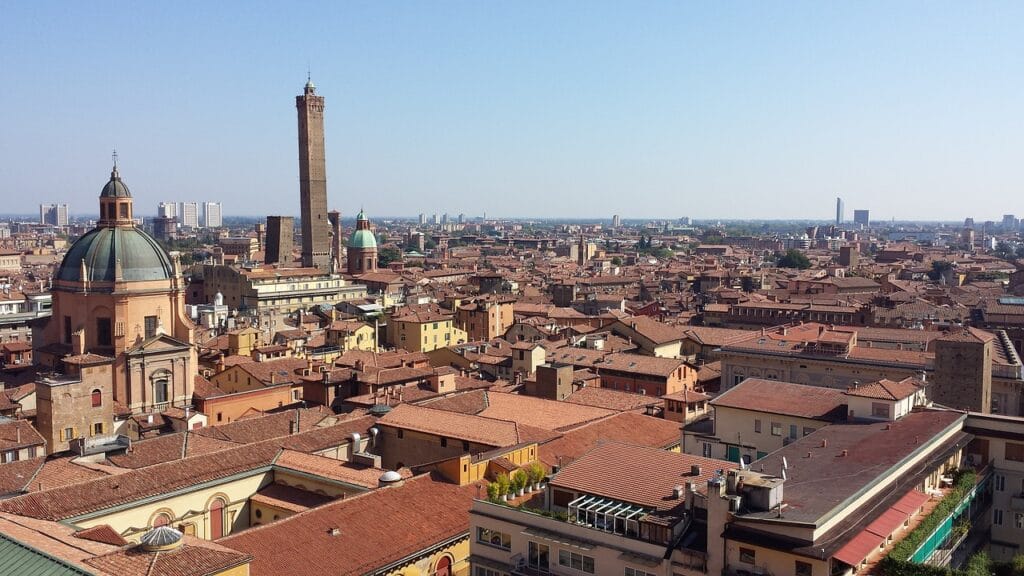Which Italian Gem Should You Visit?
Choosing between Pisa and Bologna? Both offer unique Italian experiences, but cater to different tastes. Let’s break it down.
Quick Comparison: Pisa vs Bologna
| Pisa | Bologna | |
|---|---|---|
| Known for | Leaning Tower | Food, University |
| Population | ~90,000 | ~390,000 |
| Suggested visit length | 1-2 days | 2-3 days |
| Vibe | Touristy, compact | Authentic, lively |
Pisa: Icon of Italy

Pisa, located in the Tuscany region of central Italy, is world-renowned for its iconic Leaning Tower. This historic city offers much more than just its famous tilting landmark, boasting a rich cultural heritage, stunning architecture, and a vibrant university atmosphere. With its beautiful Romanesque buildings, Gothic churches, and Renaissance piazzas, Pisa provides visitors with a journey through centuries of Italian history and art.
Key attractions include:
- The Leaning Tower and Piazza dei Miracoli
- Pisa Cathedral and Baptistery
- Palazzo dei Cavalieri
- Charming medieval streets like Borgo Stretto
Pisa is perfect for a 1-2 day visit, offering a compact historical center that’s easily explored on foot.
Discover more about Pisa’s charms.
Bologna: Culinary Capital

Bologna, the capital of Emilia-Romagna in northern Italy, is a city that captivates visitors with its rich history, stunning architecture, and world-renowned cuisine. Known as “La Dotta” (The Learned) for its ancient university, “La Rossa” (The Red) for its terracotta rooftops, and “La Grassa” (The Fat) for its delectable food, Bologna offers a perfect blend of culture, academia, and gastronomy.
Highlights of Bologna include:
- The iconic medieval towers (Due Torri)
- Piazza Maggiore and its surrounding palaces
- The oldest university in the Western world
- Extensive porticoes (covered walkways)
- Unparalleled culinary scene
With its authentic Italian atmosphere and deeper cultural offerings, Bologna rewards those who stay for 2-3 days or more.
Key Comparisons: Pisa vs Bologna
1. Attractions
- Pisa: Centers around the iconic Piazza dei Miracoli, a UNESCO World Heritage site. The Leaning Tower, Cathedral, and Baptistery form a stunning architectural ensemble. Other attractions like Palazzo dei Cavalieri and the charming Borgo Stretto are within walking distance.
- Bologna: Offers a more diverse range of attractions spread throughout the city. The Two Towers and Piazza Maggiore are central highlights. The city’s 40km of porticoes, a UNESCO World Heritage site, provide a unique architectural feature. Bologna also boasts numerous medieval palaces, churches, and Europe’s oldest university.
2. Cuisine
- Pisa: Features Tuscan cuisine, known for its simplicity and high-quality ingredients. Specialties include Pici pasta, Cecina (chickpea flatbread), and Torta co’ bischeri (rice cake). The culinary scene is good but not as renowned as other Tuscan cities.
- Bologna: Nicknamed “La Grassa” (The Fat) for its rich culinary traditions. It’s considered one of Italy’s food capitals. Famous for Tagliatelle al Ragù (the authentic “Bolognese”), Mortadella, Tortellini in brodo, and Lasagne Verdi. The Quadrilatero area offers a concentrated food experience with markets and traditional shops.
3. Atmosphere
- Pisa: Has a touristy yet charming atmosphere, especially around Piazza dei Miracoli. The city is compact and easily walkable, with a lively student population adding to its energy. Areas away from the main attractions offer a quieter, more local feel.
- Bologna: Provides a more authentic Italian city experience. It has a bustling atmosphere with a mix of students, locals, and fewer tourists compared to Pisa. The extensive porticoes and large squares give the city a grand, open feeling. Bologna’s nightlife and cultural scene are more vibrant due to its larger size and student population.
4. Accessibility and Transportation
- Airports:
- Pisa: Galileo Galilei International Airport (PSA) is a major gateway to Tuscany, serving both domestic and international flights. It’s located just 1 km from the city center.
- Bologna: Guglielmo Marconi Airport (BLQ) is larger, offering more international connections. It’s about 6 km from the city center.
- Rail:
- Pisa: Well-connected by rail, with frequent services to Florence (1 hour) and other Tuscan cities.
- Bologna: A major rail hub with high-speed connections to major Italian cities like Florence (35 min), Milan (1 hour), Rome (2 hours), and Venice (1.5 hours).
- Local Transport:
- Pisa: Compact city center easily explored on foot. Buses available for longer distances.
- Bologna: More extensive bus network. City center restricted to cars, but easily walkable.
5. Costs and Budget Considerations
- Pisa: Generally less expensive, especially for accommodations. Entry fees to major attractions can add up, but many sights can be appreciated from the outside for free.
- Bologna: Slightly pricier overall, but with more diverse options for all budgets. Many of its attractions, like wandering under the porticoes or visiting churches, are free. Food costs can be higher due to its gourmet reputation, but there are plenty of budget-friendly options, especially around the university area.
Conclusion: Pisa vs Bologna?
- Choose Pisa for:
- Iconic sightseeing
- Short visits
- Base for Tuscan day trips
- Choose Bologna for:
- Food experiences
- Authentic Italian city life
- Longer stays
Why Not Both?
For a perfect blend of iconic sights and culinary delights, consider visiting both cities. Florence makes an excellent stop between the two, creating a Tuscan-Emilian adventure.
We’ve put together an itinerary to discover these three amazing Italian cities, find it here.
Whichever you choose, both Pisa and Bologna promise unforgettable Italian experiences. Buon viaggio!




